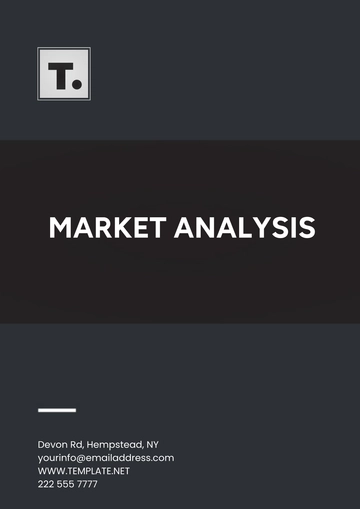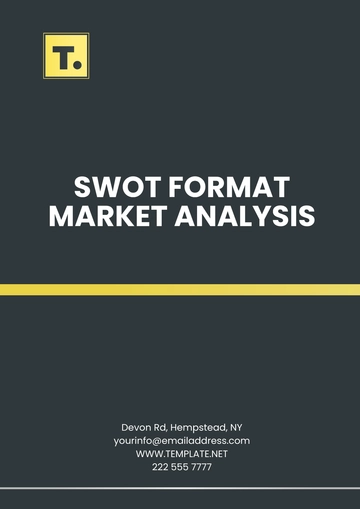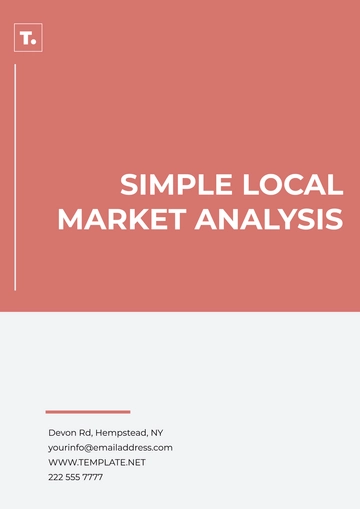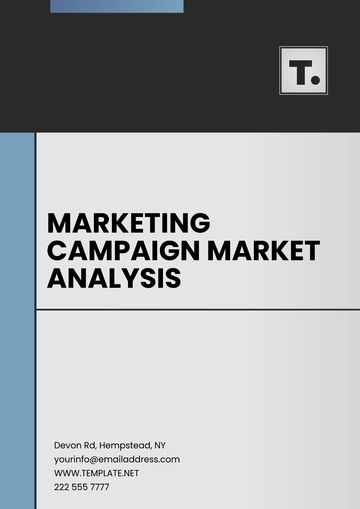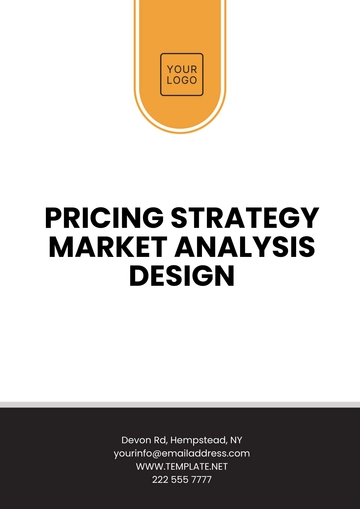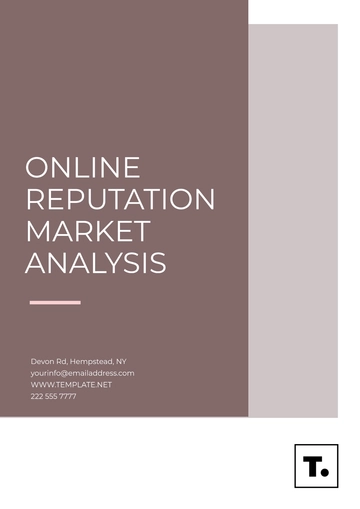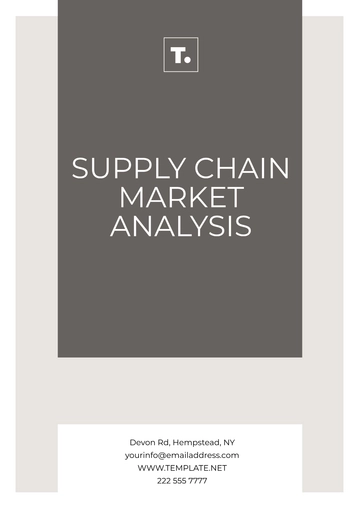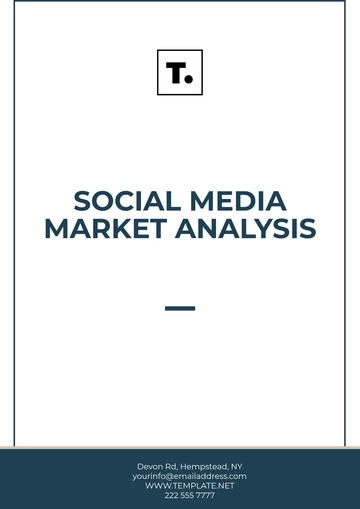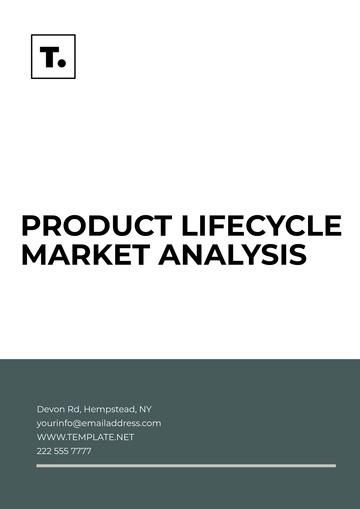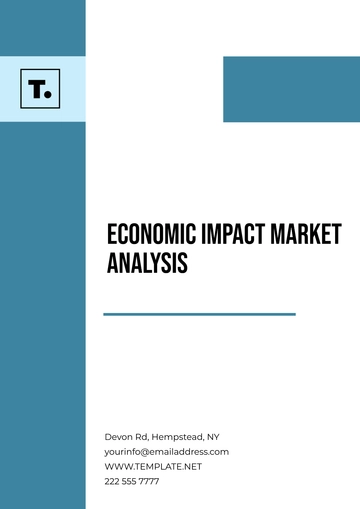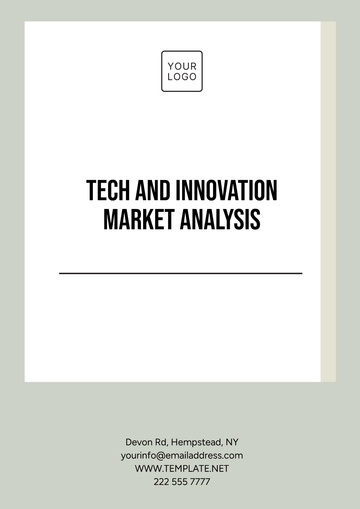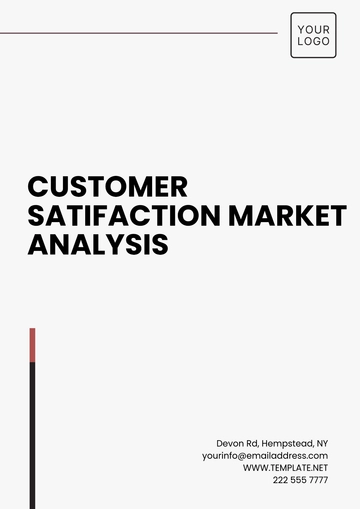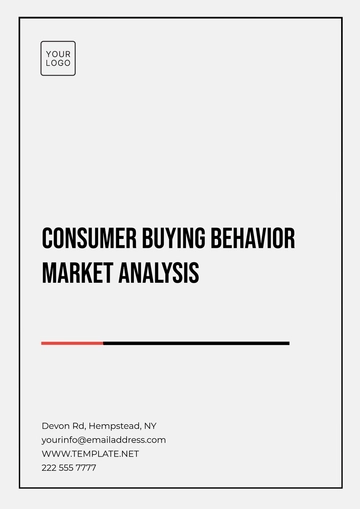Free Restaurant P & L Trend Analysis
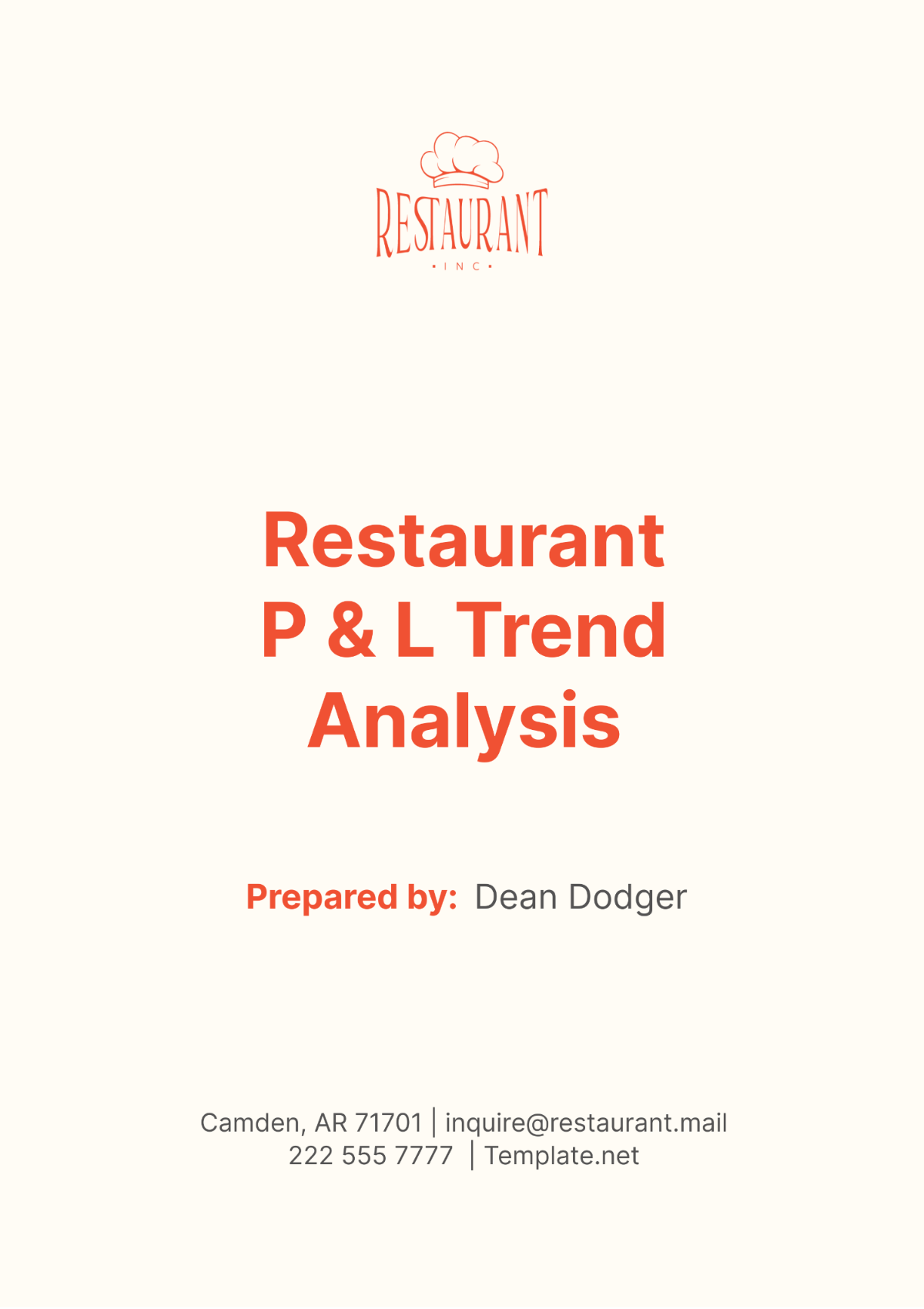
I. Executive Summary
This Profit & Loss (P&L) Trend Analysis provides a comprehensive overview of our financial performance over the past year. By examining key revenue streams, cost structures, and profitability metrics, we aim to identify trends and areas for improvement. This analysis will guide our strategic decisions and operational enhancements to ensure sustained growth and profitability.
Key Findings
Total Revenue Growth: Increased by 12% year-over-year.
Gross Profit Margin: Maintained at 60%.
Operating Expenses: Increased by 8%.
Net Profit: Increased by 10%.
Sales per Square Foot: Improved by 5%.
Labor Cost Percentage: Increased from 30% to 32% of total revenue.
Food Cost Percentage: Decreased from 28% to 26%, showing better cost control in sourcing.
II. Introduction
The purpose of this P&L Trend Analysis is to provide an in-depth examination of our financial performance over the past year. This analysis covers the period from [Date] to [Date], and aims to identify trends, patterns, and areas for improvement in our revenue streams, cost structures, and overall profitability. The scope of this analysis includes a detailed review of total revenue, cost of goods sold (COGS), operating expenses, and key profitability metrics.
The methodology for this analysis involves collecting and analyzing financial data from our internal accounting system, supplemented by industry benchmarks for comparative purposes. We use variance analysis to identify significant deviations from expected performance and key performance indicators (KPIs) to assess operational efficiency. This structured approach allows us to pinpoint strengths and weaknesses in our financial operations and develop actionable strategies for enhancement.
III. Revenue Analysis
A. Total Revenue
Our total revenue for the past year reached $3,600,000, marking a significant 12% increase from the previous year. This growth can be attributed to enhanced marketing efforts, improved customer retention strategies, and the introduction of new menu items that have been well-received by our patrons.
B. Revenue Breakdown
Our revenue is generated from various sources, each contributing to the overall growth of our business. The table below provides a detailed breakdown of our revenue streams.
Revenue Source | Amount (USD) | Percentage of Total Revenue |
|---|---|---|
Food Sales | $2,700,000 | 75% |
Beverage Sales | $600,000 | 17% |
Catering and Events | $200,000 | 6% |
Merchandise Sales | $100,000 | 2% |
Total | $3,600,000 | 100% |
Our primary revenue driver remains food sales, accounting for 75% of the total revenue. Beverage sales contribute significantly as well, reflecting our strategic focus on promoting high-margin drinks. Catering and events, though a smaller portion, have shown potential for growth and diversification of our revenue streams.
C. Sales Trends
Analyzing sales trends over the year reveals key patterns and seasonal variations that impact our revenue. The table below highlights monthly sales figures.
Our revenue peaks in December, driven by holiday season dining and events, while the summer months also show strong sales due to increased foot traffic and tourism. The steady growth across most months indicates a successful implementation of our marketing and operational strategies.
D. Comparative Analysis
Comparing our revenue with the previous two years provides insight into our growth trajectory and highlights areas of success.
Year | Revenue (USD) |
|---|---|
1 | $3,000,000 |
2 | $3,200,000 |
3 | $3,600,000 |
The comparative analysis shows a consistent upward trend in revenue, with a 6.7% increase from Year 1 to Year 2 and a 12% increase from Year 2 to Year 3. This growth underscores our effective business strategies and market positioning.
IV. Cost of Goods Sold
A. Total COGS
Our total Cost of Goods Sold (COGS) for the past year was $1,080,000, which represents 30% of our total revenue. This is an improvement from the previous year, where COGS accounted for 32% of revenue, indicating better cost management and procurement strategies.
B. COGS Breakdown
The table below provides a detailed breakdown of our COGS.
COGS Category | Amount (USD) | Percentage of Total COGS |
|---|---|---|
Food Costs | $702,000 | 65% |
Beverage Costs | $300,000 | 28% |
Other Costs | $78,000 | 7% |
Total | $1,080,000 | 100% |
Food costs constitute the majority of our COGS at 65%, followed by beverage costs at 28%. The control of these costs has been a key focus area, contributing to our improved gross profit margin.
C. Gross Profit Margin
Our gross profit margin for the past year was 70%, up from 68% in the previous year. This increase is a result of our efforts to optimize procurement processes, reduce waste, and strategically price our menu items. Maintaining a high gross profit margin is crucial for sustaining profitability and supporting our operational and marketing initiatives.
V. Operating Expenses
A. Total Operating Expenses
Our total operating expenses for the past year amounted to $2,520,000, representing 70% of our total revenue. This includes all costs associated with running the restaurant, excluding the Cost of Goods Sold (COGS). Effective management of these expenses is crucial for maintaining profitability.
B. Expense Categories
The table below provides a detailed breakdown of our operating expenses by category.
Expense Category | Amount (USD) | Percentage of Total Expenses |
|---|---|---|
Labor Costs | $1,152,000 | 45.7% |
Utilities | $504,000 | 20% |
Marketing | $180,000 | 7.1% |
Maintenance | $144,000 | 5.7% |
Supplies | $108,000 | 4.3% |
Insurance | $90,000 | 3.6% |
Depreciation | $144,000 | 5.7% |
Miscellaneous | $198,000 | 7.9% |
Total | $2,520,000 | 100% |
Labor costs constitute the largest portion of our operating expenses, accounting for 45.7%. Rent and utilities are also significant, making up 20% of total expenses. Other notable expenses include marketing and advertising, maintenance and repairs, and supplies.
C. Expense Trends
Over the past year, we have observed an 8% increase in operating expenses. The rise is primarily due to higher labor costs driven by wage increases and a competitive labor market. Rent and utilities have remained relatively stable, while marketing and advertising expenses have increased as we expanded our promotional efforts to drive revenue growth. Maintenance and repairs costs have risen due to routine upkeep and unexpected repairs.
VI. Profitability Analysis
A. Net Profit
Our net profit for the past year was $360,000, reflecting a 10% increase from the previous year. This improvement is attributed to higher revenues and better management of COGS and operating expenses.
Year | Net Profit (USD) |
|---|---|
1 | $250,000 |
2 | $320,000 |
3 | $360,000 |
The consistent increase in net profit over the past three years demonstrates our ability to grow the business and improve financial performance despite rising operating costs.
B. Profit Margin
Our profit margin for the past year was 10%, up from 9% in the previous year. This increase is due to higher revenues and improved cost management.
Year | Profit Margin (%) |
|---|---|
1 | 8.3% |
2 | 9% |
3 | 10% |
The steady improvement in profit margin indicates that we are successfully converting a higher percentage of our revenue into profit, which is crucial for long-term sustainability and growth.
C. Profitability Ratios
We use several key profitability ratios to assess our financial health and operational efficiency. The table below highlights these ratios over the past three years.
Ratio | 1 | 2 | 3 |
|---|---|---|---|
Return on Sales (ROS) | 8.3% | 9% | 10% |
Return on Assets (ROA) | 6% | 6.5% | 7% |
Return on Equity (ROE) | 12% | 13% | 14% |
The improvement in these ratios reflects our enhanced profitability and efficient use of assets and equity. The Return on Sales (ROS) ratio has increased steadily, showing our ability to generate profit from sales. The Return on Assets (ROA) and Return on Equity (ROE) ratios also show positive trends, indicating effective management of our assets and equity to generate returns.
VII. Variance Analysis
A. Revenue Variances
Revenue variances analyze the differences between our projected and actual revenues for the past year. Understanding these variances helps us identify areas where our performance exceeded or fell short of expectations.
Month | Projected Revenue (USD) | Actual Revenue (USD) | Variance (USD) | Variance (%) |
|---|---|---|---|---|
Jan | $240,000 | $250,000 | $10,000 | 4.2% |
Feb | $250,000 | $260,000 | $10,000 | 4% |
Mar | $270,000 | $280,000 | $10,000 | 3.7% |
Apr | $280,000 | $290,000 | $10,000 | 3.6% |
May | $290,000 | $300,000 | $10,000 | 3.4% |
Jun | $300,000 | $310,000 | $10,000 | 3.3% |
Jul | $310,000 | $320,000 | $10,000 | 3.2% |
Aug | $320,000 | $330,000 | $10,000 | 3.1% |
Sep | $300,000 | $310,000 | $10,000 | 3.3% |
Oct | $270,000 | $280,000 | $10,000 | 3.7% |
Nov | $280,000 | $290,000 | $10,000 | 3.6% |
Dec | $370,000 | $380,000 | $10,000 | 2.7% |
Total | $3,480,000 | $3,600,000 | $120,000 | 3.4% |
Overall, our actual revenue exceeded projections by $120,000, or 3.4%. This positive variance is largely due to successful marketing campaigns and effective seasonal promotions, particularly during peak periods like December.
B. Expense Variances
Expense variances analyze the differences between our projected and actual expenses, highlighting areas where costs were higher or lower than expected.
Expense Category | Projected Expense (USD) | Actual Expense (USD) | Variance (USD) | Variance (%) |
|---|---|---|---|---|
Labor Costs | $1,100,000 | $1,152,000 | $52,000 | 4.7% |
Utilities | $500,000 | $504,000 | $4,000 | 0.8% |
Marketing | $180,000 | $180,000 | $0 | 0% |
Maintenance | $140,000 | $144,000 | $4,000 | 2.9% |
Supplies | $110,000 | $108,000 | ($2,000) | -1.8% |
Insurance | $90,000 | $90,000 | $0 | 0% |
Depreciation | $140,000 | $144,000 | $4,000 | 2.9% |
Miscellaneous | $190,000 | $198,000 | $8,000 | 4.2% |
Total | $2,450,000 | $2,520,000 | $70,000 | 2.9% |
Our actual expenses were higher than projected by $70,000, or 2.9%. The primary contributors to this variance were labor costs, which exceeded projections by 4.7%, and miscellaneous expenses, which included unexpected costs.
C. Profit Variances
Profit variances analyze the differences between our projected and actual profits, providing insight into overall financial performance.
Month | Projected Profit (USD) | Actual Profit (USD) | Variance (USD) | Variance (%) |
|---|---|---|---|---|
Jan | $48,000 | $50,000 | $2,000 | 4.2% |
Feb | $50,000 | $52,000 | $2,000 | 4% |
Mar | $54,000 | $56,000 | $2,000 | 3.7% |
Apr | $56,000 | $58,000 | $2,000 | 3.6% |
May | $58,000 | $60,000 | $2,000 | 3.4% |
Jun | $60,000 | $62,000 | $2,000 | 3.3% |
Jul | $62,000 | $64,000 | $2,000 | 3.2% |
Aug | $64,000 | $66,000 | $2,000 | 3.1% |
Sep | $60,000 | $62,000 | $2,000 | 3.3% |
Oct | $54,000 | $56,000 | $2,000 | 3.7% |
Nov | $56,000 | $58,000 | $2,000 | 3.6% |
Dec | $74,000 | $76,000 | $2,000 | 2.7% |
Total | $696,000 | $720,000 | $24,000 | 3.4% |
Our actual profit exceeded projections by $24,000, or 3.4%. This positive variance indicates effective revenue generation and cost control measures, contributing to our overall financial success.
VIII. Key Performance Indicators
Our Key Performance Indicators (KPIs) provide a snapshot of our operational efficiency and financial health. These metrics are crucial for monitoring performance and identifying areas for improvement.
KPI | Value |
|---|---|
Sales per Square Foot | $600 |
Labor Cost Percentage | 32% |
Food Cost Percentage | 26% |
Beverage Cost Percentage | 28% |
Customer Satisfaction Rate | 92% |
Table Turnover Rate | 3 times |
Average Check Size | $30 |
Our KPIs reveal several key insights:
Sales per Square Foot: At $600, this metric indicates high efficiency in space utilization and sales generation.
Labor Cost Percentage: While slightly above industry benchmarks at 32%, it reflects our investment in quality staff to ensure excellent customer service.
Food and Beverage Cost Percentages: These are within acceptable ranges, demonstrating effective cost control in sourcing and inventory management.
Customer Satisfaction Rate: A high rate of 92% indicates strong customer loyalty and satisfaction with our dining experience.
Table Turnover Rate: At 3 times per shift, this metric suggests efficient use of seating capacity, contributing to revenue generation.
Average Check Size: $30 per customer is indicative of our ability to maintain a balanced menu pricing strategy.
IX. Recommendations
Based on the findings from our P&L trend analysis, we have identified several key areas for improvement and growth. These recommendations are designed to enhance our financial performance, optimize operations, and sustain our competitive advantage.
Enhance Marketing Strategies: Increase investment in digital marketing and social media campaigns to attract new customers and retain existing ones. Explore partnerships with local influencers and community events to boost brand visibility.
Optimize Labor Costs: Implement more efficient scheduling practices to better align labor hours with peak demand times. Consider cross-training staff to improve flexibility and reduce the need for additional hires.
Expand Revenue Streams: Diversify our offerings by expanding our catering services and introducing seasonal or limited-time menu items that can attract repeat customers.
Improve Inventory Management: Implement advanced inventory management software to minimize waste and optimize order quantities based on historical sales data and seasonal trends.
Focus on Customer Experience: Continuously gather and analyze customer feedback to identify areas for improvement. Enhance training programs to ensure consistent, high-quality service that exceeds customer expectations.
Cost Control Measures: Regularly review and renegotiate supplier contracts to ensure we are receiving the best possible prices for ingredients and supplies. Explore bulk purchasing and local sourcing options to reduce costs.
Enhance Sustainability Efforts: Strengthen our commitment to sustainability by increasing the use of eco-friendly packaging and sourcing more organic and locally-produced ingredients.
X. Conclusion
In conclusion, our P&L trend analysis has provided valuable insights into our financial performance and operational efficiency. By addressing the identified areas for improvement and implementing the recommended strategies, we can enhance our profitability, optimize our operations, and continue to deliver an exceptional dining experience to our customers. We are committed to continuous improvement and leveraging these insights to drive our success forward. Let us take these actionable steps to ensure sustained growth and a stronger competitive position in the market.
- 100% Customizable, free editor
- Access 1 Million+ Templates, photo’s & graphics
- Download or share as a template
- Click and replace photos, graphics, text, backgrounds
- Resize, crop, AI write & more
- Access advanced editor
Analyze financial performance with the editable and customizable Restaurant P & L Trend Analysis Template from Template.net. This template helps you track profit and loss trends effectively. Editable in our AI Editor tool, it allows you to customize financial data to suit your restaurant's needs. Enhance your financial insights with this efficient and user-friendly analysis tool.
